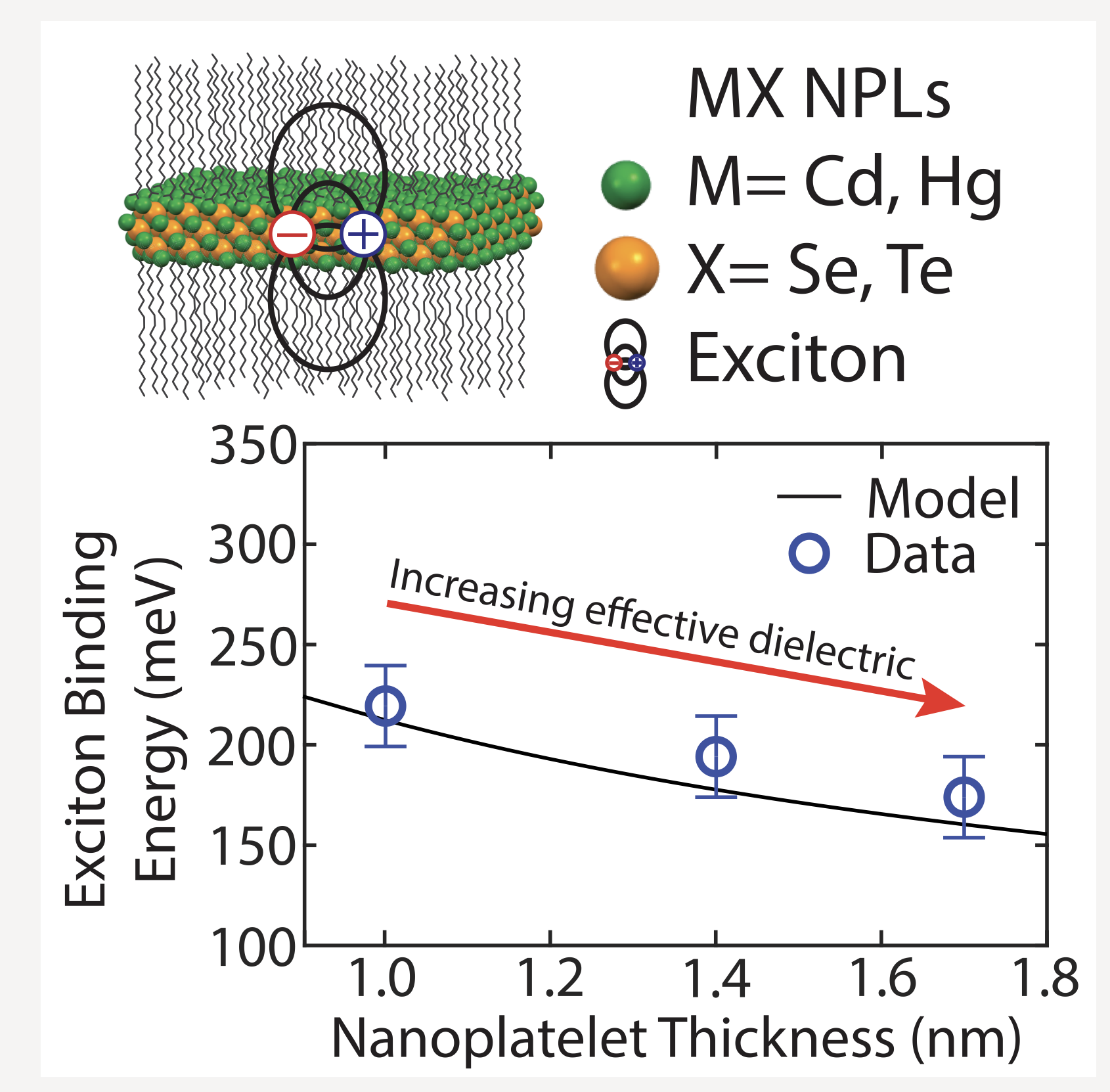Dielectric Screening Modulates Semiconductor Nanoplatelet Excitons
JAshley J. Shin, Azmain A. Hossain, Stephanie M. Tenney, Xuanheng Tan, Lauren A. Tan, Jonathan J. Foley IV, Timothy L. Atallah*, and Justin R. Caram*
J. Phys. Chem. Lett.
2021

The influence of external dielectric environments is well understood for 2D semiconductor materials but overlooked for colloidally grown II−VI nanoplatelets (NPLs). In this work, we synthesize MX (M = Cd, Hg; X = Se, Te) NPLs of varying thicknesses and apply the Elliott model to extract exciton binding energiesreporting values in good agreement with prior methods and extending to less studied cadmium telluride and mercury chalcogenide NPLs. We find that the exciton binding energy is modulated both by the relative effect of internal vs external dielectric and by the thickness of the semiconductor material. An analytical model shows dielectric screening increases the exciton binding energy relative to the bulk by distorting the Coulombic potential across the NPL surface. We further confirm this effect by decreasing and recovering the exciton binding energy of HgTe NPLs through washing in polarizable solvents. Our results illustrate NPLs are colloidal analogues of van der Waals 2D semiconductors and point to surface modification as an approach to control photophysics and device properties.